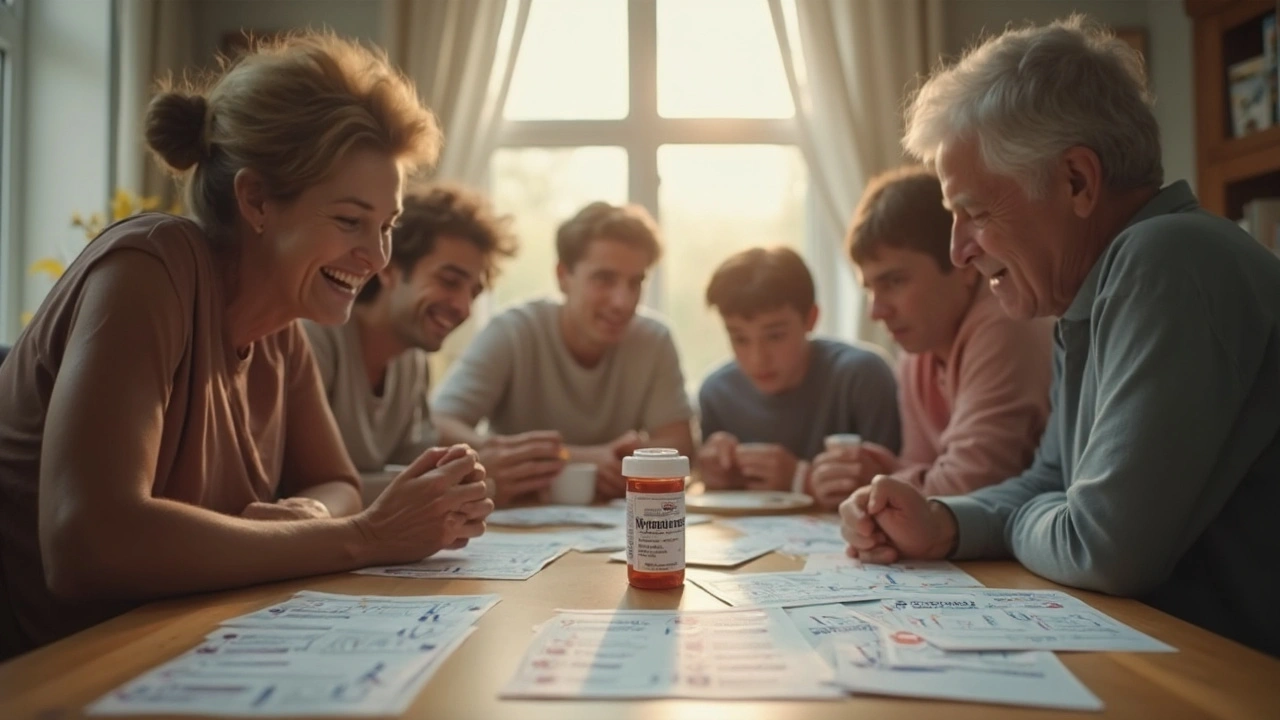TB medication: what to know before and during treatment
If you've been diagnosed with tuberculosis (TB) or are helping someone who has, the medicine plan can look intense. TB treatment uses a mix of drugs over months to kill the bacteria and prevent resistance. This short guide explains the common meds, side effects to watch for, and simple steps to keep treatment on track.
Which drugs are used for TB?
For drug-susceptible TB the standard combo is four first-line drugs taken in a specific schedule. The usual intensive phase (first 2 months) includes isoniazid (INH), rifampin (also called rifampicin), pyrazinamide, and ethambutol. After that comes a continuation phase—typically 4 more months—using isoniazid plus rifampin. That 6-month total is a common plan, though doctors adjust it by case.
Latent TB (no active disease) has shorter options: isoniazid alone for several months, rifampin alone for a shorter course, or a weekly isoniazid-plus-rifapentine regimen for 3 months in some settings. For multi-drug resistant TB (MDR-TB), treatment uses second-line drugs like fluoroquinolones (moxifloxacin, levofloxacin), bedaquiline, linezolid, and others. MDR-TB plans are longer and tailored to the resistance profile.
Side effects, monitoring, and practical tips
Side effects are common but manageable when caught early. Key things to know: several TB drugs can affect the liver—isoniazid, rifampin, and pyrazinamide—so baseline and periodic liver tests are often recommended. Isoniazid can cause peripheral neuropathy; taking vitamin B6 (pyridoxine) prevents this in many people. Ethambutol can affect vision, so report blurred sight or color changes right away and get periodic eye checks.
Rifampin interacts with many medicines because it speeds up liver enzymes. That can lower levels of birth control pills, some heart medicines, and certain HIV drugs. Always tell your clinician about every prescription, over-the-counter drug, and supplement you take.
Adherence matters more than anything else. Missing doses or stopping early raises the risk of treatment failure and drug resistance. If daily dosing is hard, ask about directly observed therapy (DOT) or pill boxes, alarms, and support services. If side effects make you want to stop, call the clinic first—often they can change the plan or manage the symptoms.
Be careful buying antibiotics online. Only use licensed pharmacies with a prescription. Counterfeit or incorrect TB meds can do harm and contribute to resistance. If cost or access is an issue, clinics and public health programs often have support or free treatment options.
Questions for your provider: what exact drugs and schedule will I take, what tests do I need, which side effects require immediate care, and how will you monitor treatment progress? Clear answers make the months ahead simpler and safer.
Want reliable reading from GenericVilla.com? Check our related articles on antibiotics, safe online pharmacies, and drug side effects to learn more about staying safe on medication.
Discover how Myambutol (ethambutol) works for tuberculosis, its effects, side effects, tips for safe use, and important facts for patients and carers.
View Details
